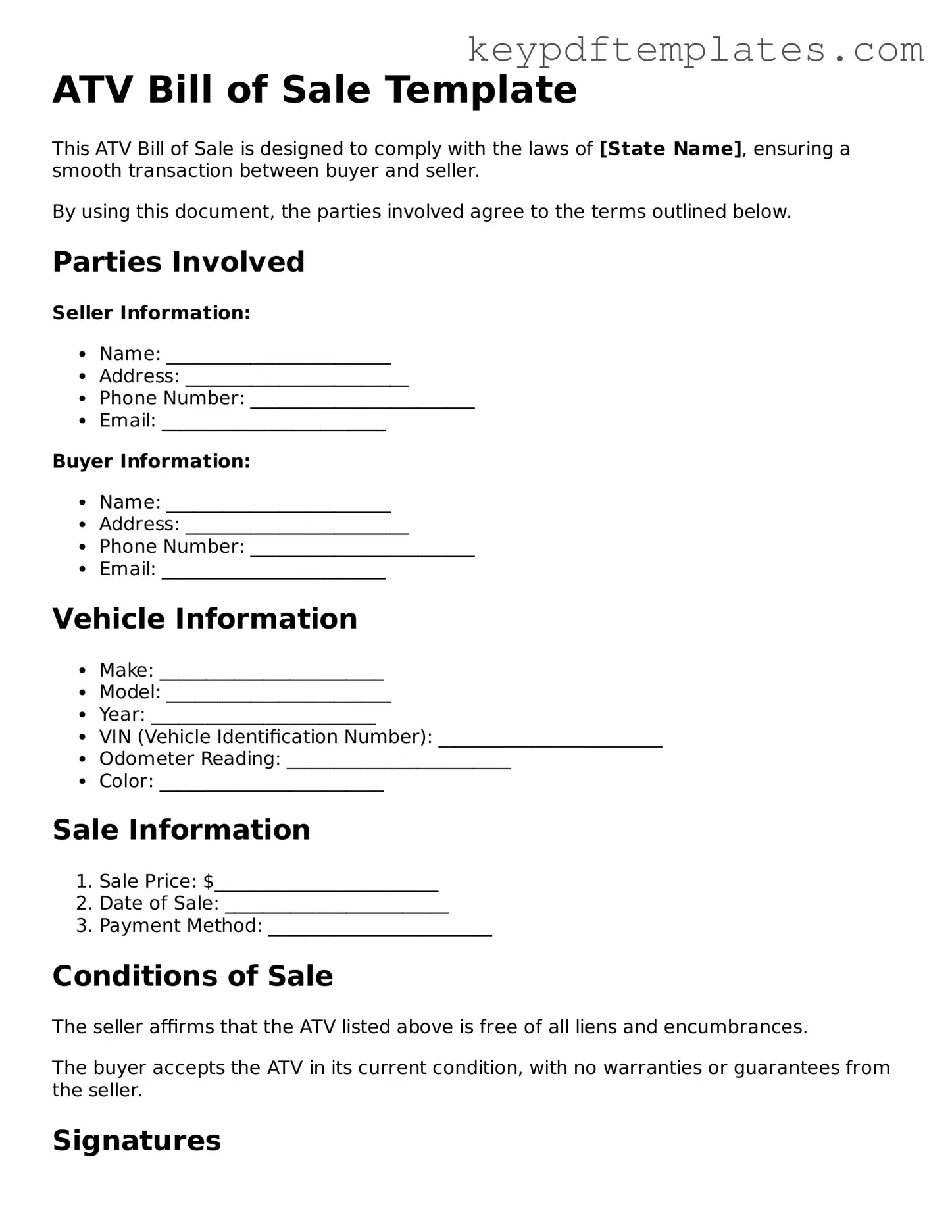Printable ATV Bill of Sale Template
An ATV Bill of Sale form is a legal document that records the transfer of ownership of an all-terrain vehicle from one party to another. This form provides essential details about the transaction, ensuring both the buyer and seller have a clear understanding of the agreement. Completing this form is crucial for protecting both parties' rights and interests in the sale.
Modify Document Online
